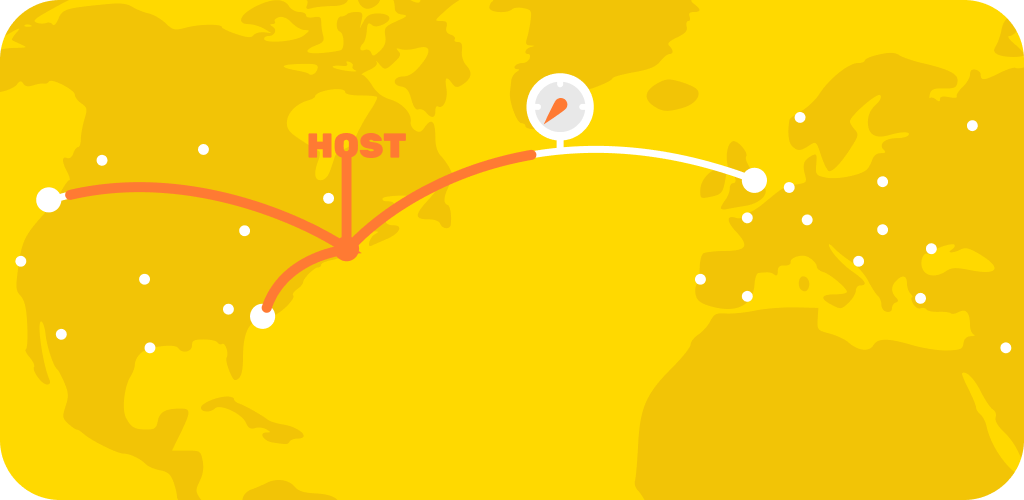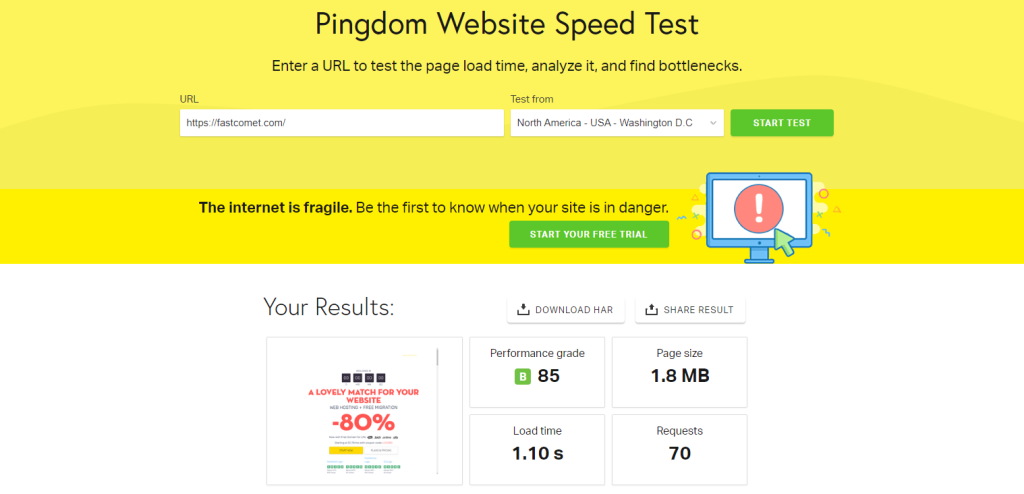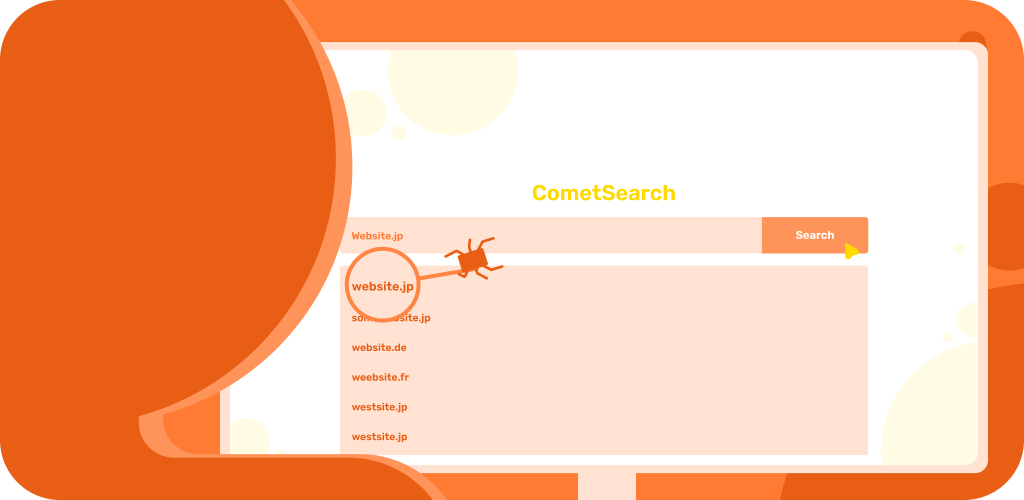The world has become a very small place ever since the Internet became commercially available and widespread. Everyone can connect with everyone else, endless information is at our fingertips, and workspaces are now Discord or Zoom calls instead of an office. However, there is one essential thing that we often overlook when we think about the Internet in that fashion: it is still, down at its core, a tangle of cables and routers that physically transport our signals all around the globe. For that reason, a website that might open instantly for your friend across the ocean might take ages to open for you. That is how a hosting location can impact website performance and even SEO.
This blog post will elaborate on how a web host’s location affects website performance and SEO rankings. Fast and stable Internet connections are often taken for granted, only for users to then get a reality check when that one website does not open in an instant. Yes, it could be an unoptimized website, but it could be that you are very far away from the host. Focusing on the latter, we will explain what happens when a website’s host is not local to its user base and the ramifications that can have. As for the former, always optimize your website; it helps immensely.

What is a Hosting Location?
Before we discuss the core of this blog post, we should clarify what a hosting location is.
It goes without saying that every website ever made is hosted somewhere. The reason for that is because a website is actually a collection of files with code in them that gets executed logically by your browser. Your browser reads the files on the server and then converts the code to the graphical representation on your screen. The point is, though, that those files must live somewhere. Ninety percent of the time, “somewhere” is a server of some sort. Maybe in a data center, a privately owned one, or a cloud, but a server nonetheless. Of course, there are other modern technologies for hosting a website that slightly diverge from what we described above. Still the files are located somewhere physically.
With this in mind, it is very easy to explain a hosting location: the computer where a website’s files live. Web clients like Internet browsers connect to that computer and request the website’s files. They then translate them, and make the site appear on the end user’s screen. However, sometimes, that connection might take a while to get from your computer to the server.
For example, if a user from Europe tries to connect to a website with a host location in Japan, it can take a while before anything starts loading on the screen. The reason is that the signal your computer sends has to travel thousands of miles of cable. That will take it through different countries, ISPs, and routers. Yes, modern-day technology allows signals to travel at almost the speed of light. There is still a lot of distance to cover, though, not counting possible network congestion or other issues. The time it takes for your connection to travel to its destination is called latency. Or, to be precise, it is the combined time it takes for the request your computer sends to the server and the response the server sends back to arrive.
While researching this post, we found a rather handy website that lets you test your connection to several servers worldwide. We also found another website that directly compares the latency between specific cities. So, if you are curious how long it would take for your computer to connect to a website in another country, you can test it yourself. Just bear in mind that even though everything is in milliseconds, most websites are not tiny. Depending on the data the server sends back to your browser, those 300 milliseconds you see might turn into 30 seconds.

How Hosting Location Affects Performance
Now that we know what a hosting location is and how it can affect connection speeds, it is time to actually get into the meat and potatoes of this blog post.
You probably have a good idea by now how a far-away host from your location will affect the performance of a website you are visiting. The closer, the faster, as we explained in the previous part. However, things are a bit more complicated than raw speed. Modern customers typically want everything to happen as instantly as possible. Google suggests a website should appear on the screen within 2.5 seconds for optimal user experience. We are sure you can already see where we are going with this. You can use a tool like Pingdom to test your website’s loading speed. We tested FastComet.com; you can see the loading time in the screenshot below.

If you want to learn more about website testing tools and how to read the information from those tests, you can check out our blog on the matter here.
In the past, a website that took longer than that to load might have been acceptable. Back then, we did not have the technologies to alleviate the various issues that come with connecting over long distances or transferring large amounts of data. Now we do, so most users expect speed from the websites they visit. So, in this case, your website’s hosting location can directly impact the user experience. Bad user experience means fewer visits. That then means search engines will pay less attention to the website, and the avalanche goes on. We will touch upon SEO in the next section, so stand by.
We have been talking about the negatives of a far-away hosting location all this time. Therefore, here is a list of all the positives a local hosting location can have for your website.
- Loading Times – Earlier, we mentioned latency. Users that live close (think same or neighboring country) to a website’s host will enjoy the fastest loading times. Their latency will be the lowest possible. The data has to travel to and from the server a shorter distance (considering it does so at almost-light speeds). Therefore, your browser receives the data from the server that much more quickly;
- Response Time – This is how long it takes for an action the user takes to reflect on the website. Clicking a button, for example. It can feel nigh instantaneous when opening a website from a server that is not on the other side of the world. If you have ever played an online game with high latency, you know exactly what we mean;
- Reliability and Stability – We mentioned data must travel along a physical wire and between networks and routers to reach its destination. Since each such hop requires processing time (especially if there is network congestion), the connection will be slower. There is also a chance that some of the data might get corrupted or lost along the way. So, the closer the server is to you, the more stable and reliable the connection;
- User Experience – Visitors love a snappy and responsive website. Server location plays a huge role in that. A server closest to your user base will be quick and responsive, making them all very happy. Therefore, more hits for you.
Hosting location is the foundation upon which you build and optimize your website. You might have the most optimized website, but if connections have to make a dozen hops to and from your server, all of that will be for naught. That is why many companies have server
infrastructures worldwide to accommodate their global customers. As we want to provide the best performance to our customers, we offer twelve shared hosting locations strategically placed around the globe. For our VPS and Dedicated Server solutions, we have the above-mentioned twelve plus another twelve for a total of twenty-four locations.
However, one more thing hosting location affects is SEO (Search Engine Optimization).

How Hosting Location Affects SEO
Search Engine Optimization is up there with website performance and quality content regarding factors important to website success. In fact, the latter two have a direct effect on SEO themselves. All three of them play a vital role in the discoverability of a website. The better your website’s performance and quality, the better its SEO score will be. As a result, it will appear higher in search results.
As we already know, server location is a huge factor in loading speeds and overall performance. Why does that matter when it comes to SEO? It has to do with the so-called crawlers. These crawlers are automated bots that, as the name suggests, crawl the Internet and index the pages of every website. Indexing a page adds it to a vast online catalog. Search engines can then refer to it when a user searches the Internet. If you want to learn more about indexing and crawlers and how to manage them, you should absolutely check our blog post about them.
But what do crawlers have to do with your website’s speed, and why is that important for SEO? In order for a crawler to index a page, it opens it as if it were a regular user. Let us take Google for example. Typically, Google uses crawlers from U.S.-based IPs. However, several factors can change that behavior.
- Your hosting location can cause Google to use a more local crawler instead;
- If your website is in a different language than English, Google may choose to prioritize a crawler on a server closer to that country;
- Additionally, Google may use a non-U.S. crawler if your website receives traffic predominantly from a specific country;
- Finally, the TLD (Top Level Domain) matters as well. A .jp domain can cause Google to use a crawler from a server in Japan.
So, Google has the capability to crawl your website no matter where it is hosted. Because of that, it is vital you choose a hosting location that caters to your audience. That way the bots can pick up on that and crawl it more efficiently.
Additionally, SEO rankings are heavily affected by page load speeds and the other Core Web Vitals. Fast websites rank higher than slow ones, and the foundation for a fast website is the correct hosting location, exactly!
Finally, server location can also affect local search results. If your website targets users in a specific country, your server location will reinforce that local focus. For example, if your website caters to Japanese users, Google is more likely to suggest your website to searches from Japanese networks.
These things related to hosting location impact SEO in various ways, but they are still important nonetheless. The key takeaway here is, though, to always host your website near the target audience. Everything else improves from that. If you host far away, those optimizations might not be as effective as you would like.

Supplementing Hosting Location With a CDN
Fortunately, in our age of technological wonders, there are ways to reduce the impact distance to the hosting server has on website performance. As you might have guessed by the title of this section, we will focus on Content Delivery Networks as a way to make your website “global.”
We want to focus on CDNs because they are an inexpensive but efficient solution for most websites. Most sites will not need some custom solution or niche server configuration to reduce latency worldwide. If you have such a website, you can look into multi-regional hosting, where you host your website across several datacenters.
For most users, though, a simple CDN will be more than enough to make a significant difference when it comes to website performance. The reason for that lies in a CDN’s main functionality: delivering content across a global network. Not only does that help far-away visitors open your website more easily, but it will also boost loading speed. Here is a quick explanation of how a CDN helps your website’s performance.
- Caching Content – At the core of any CDN lies the ability to cache a website’s static content. Static content is files and data that do not change based on user interaction. Things like website structure, appearance, interactive elements, images, video, audio, fonts, downloads, etc. When a CDN caches those elements, it distributes them across multiple servers in its network. That way, users will be served the static elements from the nearest to the server. Therefore, the content loads more quickly. Of course, the dynamic content will still have to come from the hosting server itself. That is usually much less data, though;
- Reducing Latency – Because the connection travels to a nearby CDN server and not the actual hosting server, the distance is much shorter. Because of that, latency is much lower, so the website loads more quickly due to this factor as well;
- Load Balancing – Since traffic to your website gets split between your hosting server and the CDN’s servers, traffic spikes should be less impactful. If one region of the world suddenly starts overwhelming your website, only a portion of that traffic (requests for dynamic content) will be directed to your hosting server. The CDN handles the static content;
- Resource Optimization – Each time a visitor requests an element of your website, that uses up bandwidth. Users on Shared Hosting environments are probably all too aware of how valuable bandwidth is and how important it is to try and optimize its usage. A CDN helps with that since the majority of a website’s content (the static elements) are offloaded to its servers and not the website’s;
- Security – Many CDNs offer security layers that work on a request level. That means they trigger before whatever attack comes your way has time to cause much damage.
Content Delivery Networks are an excellent way to boost website performance and security. They can also reduce load and bandwidth usage, and improve user experience. So much so that we always recommend our customers consider Cloudflare. Connecting a website to their free plan offers so many benefits. We also strongly recommend you check out our Cloudflare tutorial to learn more about how CDNs work and what Cloudflare itself can do for your website. You will also read about each option the free plan offers and how to begin using their services.
As you can see for yourself, though, a Content Delivery Network like Cloudflare can significantly improve the experience of not only your local visitors but also those abroad. By serving your website’s static content from servers local to those distant visitors, a CDN can greatly reduce response times and latency.
Depending on the type of website, it might be greatly beneficial to connect it to a CDN’s servers. If you do not have a lot of content on your website–you have a portfolio website with just plain text and a few pictures, for example–then perhaps you do not necessarily need a CDN.
Far-away users will probably not notice much of a difference when opening it. However, if you run a business with a global audience or offer time and latency-sensitive services (gaming, video streaming, trading, etc.), you should most definitely consider a CDN if you have not already done so.
We must clarify something very important here. Hosting location still matters, even if you use a CDN! The dynamic content of your website still comes from your hosting server. A CDN will definitely improve your website’s performance, but it does not eliminate the need to choose your hosting server carefully, depending on your audience. Additionally, depending on local rules and regulations, you might have to host in a certain region if you want to store user data there. If we take GDPR, for example, collecting and storing data on EU users must be done by a server in a GDPR-compliant region.
With all of this said, though, those are the ways hosting location impacts performance and SEO, and a CDN is a great way to mitigate that impact.
Distance Matters
It would be a glorious day when the Internet did not need to travel along actual physical cables, and connections could happen instantly from anywhere. For now, though, the reality is that the distance between the hosting server and the user matters greatly. Loading speed, response times, and even SEO rankings are impacted by how far data must travel and how many networks it has to change before it arrives.
Using a CDN is a great way to negate most of that inconvenience. Content Delivery Networks like Cloudflare can help your website become global. They offer quick connections and excellent user experience to visitors worldwide. Just remember, even a CDN is not magic. It will help, but distance will not be eliminated as a factor. Nonetheless, with this information at your side, you should now have no problems choosing the perfect hosting and CDN for your website’s needs.

